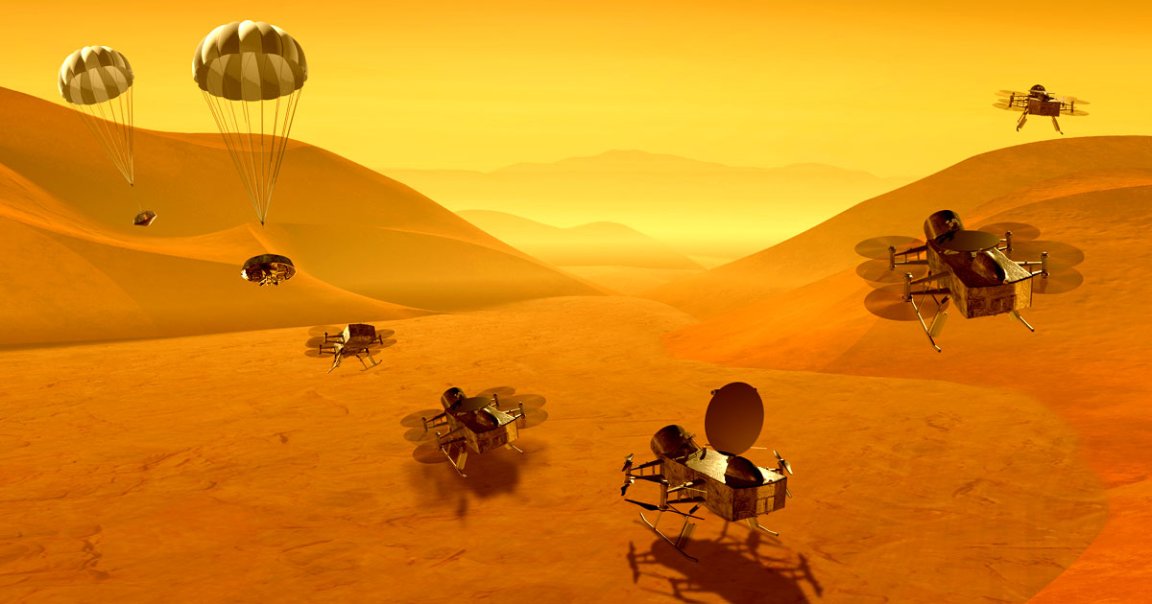
Project Dragonfly
NASA just selected its next major planetary science mission via a telecast — and it’s more ambitious than ever.
As part of project Dragonfly, NASA is planning to send a small spacecraft to Saturn’s moon Titan, a moon with an extremely dense atmosphere.
As its namesake suggests, the craft would release a microwave-sized rotorcraft — think of it as a tiny helicopter drone — to fly from location to location above the surface of Titan. It will cover up to 180 kilometers total over two years to see what its surface is made of and find out if it’s a good fit for human habitation.
So why Titan? Titan is the only moon in the Solar System with a dense, planet-like atmosphere which could allow complex molecules to form and possibly enable it to harbor life. Jim Bridenstine describes the moon as the celestial body “most comparable to early Earth” in an announcement tweet.
Instruments on board will look for organic and chemical compounds that could possibly stem from past or recent life.
It won’t be a walk in a park. The rotorcraft will have to brave temperatures around -300 Fahrenheit. Titan’s atmosphere is mostly nitrogen and far more massive than Earth’s as well affecting the way the rotorcraft’s flight. But it won’t need to put in as much effort to fly as compared to Earth: gravity is only one seventh what it is on Earth.
New Frontiers
NASA chose two finalists for its New Frontiers mission back in December 2017. One was a sample return mission to the comet 67P/Churyumov-Gerasimenko (Comet Astrobiology Exploration SAmple Return, or CAESAR). The other was the Titan mission.
Total maximum mission cost for NASA’s New Frontiers program was $850 million — NASA’s largest competitive mission program for planetary exploration.
Launch date proposal for project Dragonfly is 2026 to get to Titan in 2034, according to NASA.
READ MORE: NASA selects planetary mission proposals large and small [SpaceNews]
More on Dragonfly: A Team of Scientists Want to Land a Drone on Saturn’s Largest Moon